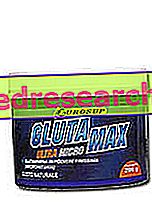The maqui is advertised as the fruit of eternal youth . Its properties would be linked to the considerable anthocyanin content, important for health, not only of the plant, but also of man. Will all this be true?

What is maqui?
The maqui is an evergreen plant that produces a blue-purple edible fruit, similar to a blueberry. Its scientific name is Aristotelia Chilensis and belongs to the Elaeocarpaceae family.
The maqui grows spontaneously in Chile, in the regions of Aysen and Coquimbo, in the islands of Juan Fernàndez and in Argentina. All these areas belong to the geographical region called Patagonia, which is characterized by:
- rigid and rainy climate, which favors the growth of the thickest and most varied vegetation. The maqui is just one of the many plants that "infest" these areas. In fact, it prefers moist soils containing humus; therefore, it is easy to meet him along a road and, in the same way, in a wood or in a clearing.
- altitude . The areas mentioned above are areas located, on average, above sea level. In some cases they even reach several thousand meters in height. Here, irradiation has fundamental effects both for growth and for the quality of the maqui. Maqui plants can also be found at an altitude of 2, 500 meters.
The maqui is a dioecious species. This means that the male and female reproductive organs are found on two distinct plants. Therefore, there exist maqui females and maqui males, which will produce, respectively, the female gametes and the male gametes. To produce fruit, the male maqui must donate its gametes to the female, through a process called pollination. The gametes of both sexes are produced during flowering and are contained within the flowers.
The Dioic species are rare in nature. Usually, the plants are monoecious, or hermaphrodite. A monoecious plant produces both male and female gametes. Consequently, to bear fruit, each plant has all the essential elements for pollination.
The tree
The maqui tree can reach 4-5 meters in height. It resembles a large shrub and its stem - white and thin, with smooth bark - is used to create musical instruments. The adult plant contains numerous branches, fine and flexible. The leaves are green and very simple: they are elliptical, pointed and have a serrated edge. The leaf surface is smooth and has an evident central grain. The stem of the leaves is deep red.
Flowering
It occurs between September and November, that is during the spring of the southern hemisphere. The flowers are bright white, very showy in the thick vegetation of Patagonia; for this reason, they certainly do not go unnoticed.

The fruit and its collection
The first fruits of the maqui appear in December and can be harvested until March, a period which in the southern hemisphere corresponds to summer and the first autumn month. The fruit of the maqui is a berry, also called maqui, of an intense blue, tending to purple. This color is due to the massive presence of anthocyanins, which are plant pigments. The taste is sweet. The dimensions of the maqui berry are variable: the diameter can measure 5-6 millimeters, but it can also correspond to that of an olive.
Wild fruit is harvested by hand. On the other hand there are no alternatives, since the intricate and dense vegetation of Patagonia does not allow the use of mechanical means. A plant of 6-7 years of age can also produce 10 kilograms of berries. It is estimated that the regions of Coquimbo and Aysen, around 170, 000 hectares in all, produce 220 kilograms of maqui per hectare. It is a theoretical calculation, based on the true quantity accessible to man, which is "only" 90 tons. In fact, many areas have such dense vegetation that it is even impossible to penetrate them.
The price, in local markets, ranges from $ 0.65 to $ 1.50 per hectare.
History
Great Maqui eaters are the Mapuche Indians, who live in Chile. The Mapuche are the only American Indians ever subdued by European conquerors during the great colonization of the Americas. It is said that it was the maqui who made these Indians tireless and very strong warriors. It seems, in fact, that these tribes made great use not only of the fruit, but also of the leaves. The fruit, besides being a source of solid food, was used to make an alcoholic beverage called Chicha, still appreciated today; the leaves, on the other hand, were used for herbal teas with soothing and medicinal powers, able to heal simple feverish states and war wounds.
It is probably a legend, as the geology of the territory has certainly played a fundamental role.
The maqui in the rest of the world
The maqui was exported from its natural habitat. In the USA, it is grown in California and in the state of Washington; in Europe, England and Spain imported it. Here, he is also known as Chilean Wineberry . Clearly, in these areas, the annual production of the fruit is not comparable to that of Chile and Argentina. In addition, special treatments and land with specific properties are required. All this goes to affect the costs necessary for the cultivation of the maqui. Costs that inevitably raise the market price.
"Miraculous" properties of the maqui
What makes the maqui special? Is the maqui really a food that gives strength and health to those who nourish it?
Until recently, not much was known about the maqui and its organic qualities. In recent years, however, (pseudo) scientific studies have begun to appear concerning the effects of fruit on human health. Comparing these articles with what has been published so far on pubmed, the results appear rather disappointing: many of the much-magnified properties of the maqui do not seem to find the slightest scientific confirmation.
Anthocyanins
Anthocyanins are plant pigments, contained in leaves, flowers and, above all, in the fruits of maqui. They belong to the flavonoid family, which in turn is part of the polyphenol group. They are water-soluble, so they dissolve in water.
Anthocyanins are used by plants to protect themselves from solar radiation . In fact, they act as antioxidants and protect the plant from harmful ultraviolet radiation. These radiations generate the so-called reactive oxygen species (ROS), better known as free radicals .
The plants also exploit anthocyanins to defend themselves against pathogens and to attract insects and animals .
| Main function of anthocyanins | Action |
| Antioxidant | Against free radicals (ROS) |
| Defense | Against plant pathogens |
| Attracting insects and animals | Pollen diffusion. Increased plant variety. |
There are several anthocyanin subgroups, for example:
- Cianidine.
- Petunidin.
- Malvidine.
- Peonidine.
- Delfinidine.
- Etc
The anthocyanins of the maqui
Scientific tests on maqui have shown that this fruit contains good amounts of anthocyanins. Of all, the most common anthocyanin is delphinidin .
The effects of anthocyanins on humans
The thesis that vegetable foods with a high anthocyanin content have a beneficial effect on humans is now consolidated. The maqui is no exception.
The potential effects of anthocyanins are:
Neutralize oxygen free radicals, responsible for cellular aging.Functions of anthocyanins in humans Anti aging Preserve vascular integrity Preserve from thrombo-embolism Protect from heart attack and stroke Adjust cholesterol Adjust the blood sugar level Modulate the inflammatory, allergic and immune response Improve the view Repair and protect connective tissue. - Promote high levels of HDL, the "good" cholesterol.
- Inhibit the formation of blood clots inside the vessels.
- Protect the integrity of blood vessel walls.
- Preserve from heart attacks and strokes.
- Protect LDL, the "bad" cholesterol, from oxidation.
- Modulate the inflammatory and immune response.
- Decrease the allergic response.
- Keep your blood sugar at normal levels.
- Neutralize the enzymes that destroy connective tissue.
- Improve the view.
In particular, delphinidins stimulate the immune system, regulate inflammation and cell growth.
| Delphinidin function | Mechanism |
| Anti-inflammatory power | They reduce the risk of developing degenerative diseases that create inflammation; reduce cellular aging. |
| Stimulation of the immune system | T cells produce interleukin 2 and other cytokines; production of interferon gamma. |
| Protection from colon cancer | Inhibit the growth of cancer cells. |
Measurement of the antioxidant activity of anthocyanins
One of the parameters that expresses the antioxidant capacity of a food is the ORAC test, an acronym for Absorption Capacity of Oxygen Radicals . A high ORAC value means high antioxidant activity in vitro.
The maqui contains anthocyanins that project it between foods with a significant ORAC value.

Figure: one of the many graphs, available online, relating to the results of the ORAC tests on maqui and other fruits. The comparison shows how the maqui would hold the supremacy of the highest antioxidant power.
PLEASE NOTE: the bibliography of the ORAC data reported in the graph is not clear; in fact the data released in 2006 by the American Ministry of Agriculture are compared with those obtained from an uncleared "independent laboratory report of the Brunswick Laboratories, MA" laboratories.
Furthermore, given that the data on the case are truthful, the results of the ORAC tests must be "taken with pliers"; first of all because they have a poor in vivo transferability (it is not said that the antioxidant power ORAC, measured in a test tube, is also high in humans, for example due to a reduced capacity for intestinal absorption); secondly, the beneficial effects of foods rich in polyphenols, such as maqui, also depend on factors other than simple antioxidant power.
If we take the total amount of anthocyanins in the fruit as a reference, the maqui has much lower values than the average of other fruits rich in antioxidants (about half compared to cherries and raspberries) *. Magically, by consulting promotional sources outside pubmed, the anthocyanin content appears higher than any other fruit. In short, something is not right and on the basis of the collected documentation, in our opinion, of "magic" there seems to be only the manipulation for commercial purposes of "unofficial" studies conducted on the maqui.
It is therefore important not to be dazzled by the high ORAC, to doubt the miraculous expressions and adjectives and to critically analyze all the potential properties of the maqui, largely theorized based on the results of simple in vitro tests.
The climate
Scientists have wondered what made maqui so rich in anthocyanins. The most accepted answer is: the climate . In these regions, as mentioned above, the climate is cold and humid. Despite this, however, the solar radiation is intense (think of the color of the skin of the "Indios"), since they are areas placed at high altitude. This combination has been fundamental in the course of evolution. In fact, in the face of this combination, cold climate-high altitude, the maqui responded with a high anthocyanin content. These, in fact, serve for:
- Defend yourself from the sun's rays and the damage they cause.
And at the same time:
- Capturing maximum lighting to deal with the cold and inhospitable climate.
However, this is not a unique event in nature; just think that wild berries, which are among the richest foods in anthocyanins, grow spontaneously in mountain areas.
WHERE TO BUY THE maqui?
It is very unlikely to buy the maqui from the trustworthy grocery store. However, given its potential properties, pharmaceutical companies have produced dietary supplements based on maqui. These supplements promise to preserve all the activities of the plant from Chile.
- Support for the immune response.
- Keep the inflammatory response effective and not harmful.
- Adjust blood glucose levels.
- Adjust blood cholesterol levels.
- Prevent cell oxidation and aging.
- Preserve the health of the vascular system and promote blood circulation.
The beneficial effects on the cardiovascular system mean that these supplements based on maqui are also particularly recommended for athletes.
In view of all these alleged properties, the amount of scientific studies on maqui berries is particularly scarce, and currently (December 2013) is even null if restricted to clinical studies only. The feeling, therefore, is to once again be faced with a supplement that miraculously seems to have only the potential for profit for those who promote it.
Side effects
At high doses, taking maqui may produce constipating effects linked to its astringent action; not surprisingly, in the lands of origin traditional medicine uses the berries of maqui as a remedy for diarrhea. Finally, we recall how even an excess of exogenous antioxidants, similar to the defect, can cause side effects (see in-depth information).



